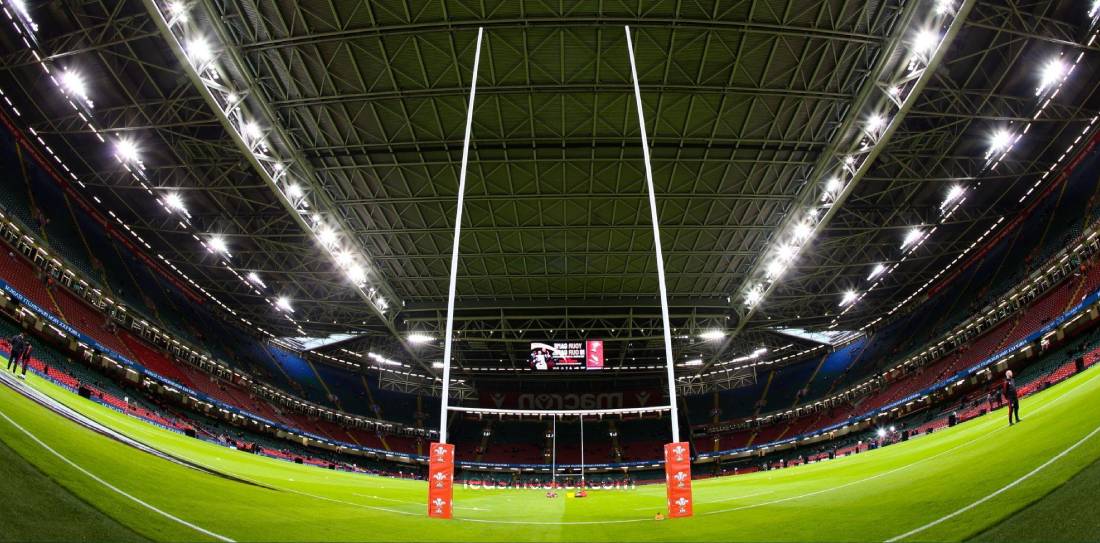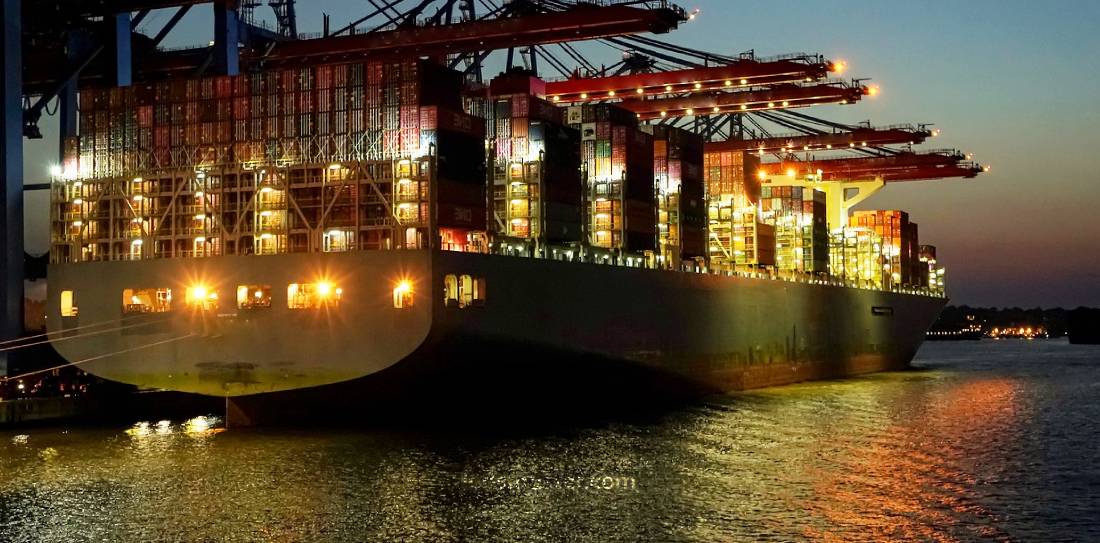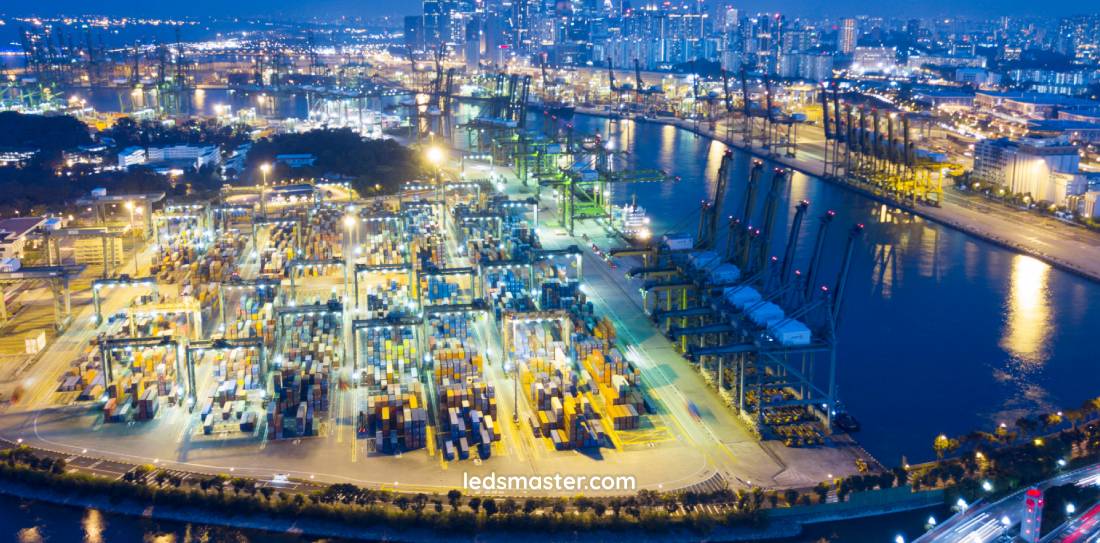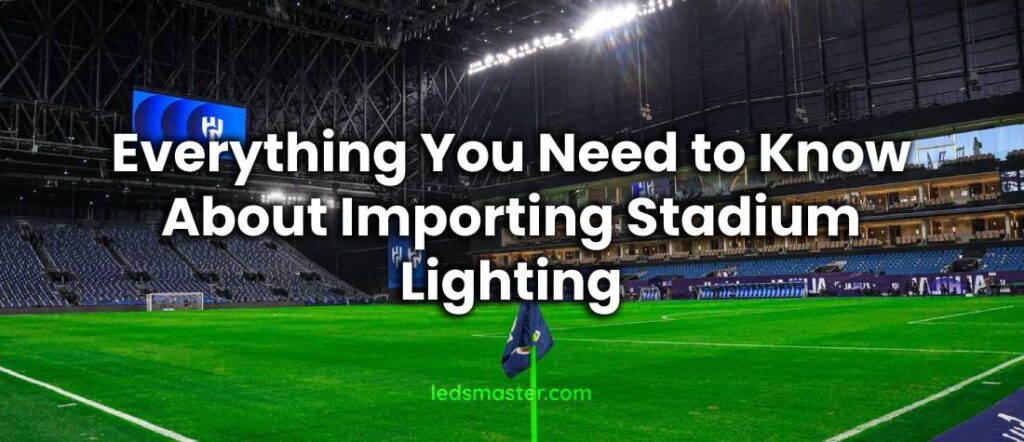Importing stadium lighting can seem like a complex process, but with the right information and understanding, it can be a smooth and rewarding experience. The quality of lighting in a stadium directly affects the spectator experience, the performance of athletes, and the overall energy efficiency of the venue. Therefore, selecting and importing the right lighting is vital. This guide provides a comprehensive overview of how to approach the importation of stadium lights, covering everything from types of lights to navigating the logistics of international shipping.
Table of Contents
ToggleUnderstanding Stadium Lighting

The Different Types of Stadium Lights
Stadium lighting comes in several types, each offering specific advantages for different types of events and sports. The most common types of stadium lights include traditional incandescent, metal halide, high-pressure sodium, and modern LED lighting systems.
Incandescent lights, though less commonly used today, have historically been a go-to option for low-intensity lighting. Metal halide lights are favored for their excellent color rendering, making them a popular choice for sporting events where true colors are critical. High-pressure sodium lights are generally used for outdoor stadiums, offering a warm, yellowish light, but they have been largely replaced by more efficient alternatives.
LED lighting is currently the top choice for most stadiums, offering a wide array of benefits, including energy efficiency, longer lifespans, and low maintenance costs. LED technology continues to evolve, allowing for more precise control over lighting intensity, color, and energy consumption, which makes them an attractive choice for modern stadiums.
Choosing the Right Type of Lighting for Your Stadium
The decision on what type of lighting to import depends on several factors. The size of the stadium, the type of sports or events being hosted, and the budget all come into play when determining the ideal lighting system. A key consideration is the lighting intensity. Stadiums that host professional sports or large-scale events, like concerts or international tournaments, require lighting systems with high lux levels to ensure visibility for both spectators and athletes.
Another factor to consider is the uniformity of light distribution. Uneven lighting can lead to hot spots or shadowed areas, which can negatively affect performance. LED lights, in particular, offer the flexibility to customize light levels and coverage for any venue size. Importantly, modern LED systems can be integrated with digital systems to provide dynamic lighting for special events.
The Importation Process: Steps and Challenges

Researching the Best Suppliers
When importing stadium lighting, one of the first steps is to identify reliable suppliers. Choosing the right supplier is crucial because they not only provide the lighting systems themselves but also offer support throughout the lifecycle of the product. This support could include assistance with installation, ongoing maintenance, troubleshooting, and even the provision of warranties or replacement parts. A reputable supplier will ensure the lighting systems meet all necessary quality standards and performance expectations, which is vital for large-scale installations like stadiums.
Some of the most recognized and trusted brands in the stadium lighting industry include Philips, Osram, and General Electric. These global companies offer a wide variety of lighting solutions designed to meet different requirements. Their products generally excel in aspects such as energy efficiency, durability, high luminosity, and advanced control options. They also tend to comply with international certifications and standards, which helps ensure the products are suitable for use in most countries.
However, it’s also important to explore options beyond these industry giants. While major brands are often reliable, smaller or regional suppliers may offer more competitive pricing, quicker delivery times, or specific products better suited to your needs. Local suppliers can sometimes provide more personalized services, such as tailoring lighting solutions to fit local regulations or specific requirements unique to your stadium.
Researching regional suppliers may also provide advantages in terms of lower shipping costs and quicker delivery times. For instance, certain countries may have tariffs or trade agreements that make it more cost-effective to source lighting from nearby manufacturers. Additionally, local suppliers might be more familiar with the specific technical requirements and legal standards required for your area. As such, it’s essential to evaluate all options carefully, comparing factors such as product quality, cost, after-sales service, and shipping timelines.
When assessing potential suppliers, it’s essential to ask the right questions. For example, do they offer installation services or support? What’s the warranty on the lighting systems? How responsive are they to service requests, and how quickly can replacement parts be delivered if needed? An experienced supplier should be able to provide answers to these questions and should offer clear documentation regarding the product specifications and regulatory compliance.

Understanding Regulations and Standards
Each country has its own set of rules and regulations governing the importation and use of electrical equipment, including stadium lighting. Understanding these regulations is crucial to ensuring that the lighting systems you import meet the necessary safety, environmental, and performance standards.
One of the first things to check is the certifications required by your country or region. Many nations require imported lighting systems to meet specific safety standards, which are usually indicated by certification marks such as CE (Conformité Européene) in the European Union, UL (Underwriters Laboratories) in the United States, and ETL (Electrical Testing Laboratories) in Canada. These marks confirm that the product has been tested for safety and performance and complies with the relevant local standards. Not all suppliers or manufacturers may provide lighting that meets these certifications, so it’s important to confirm this during the selection process.
In addition to safety standards, environmental regulations play a critical role in the importation process. For instance, the European Union has strict laws governing the energy efficiency and environmental impact of lighting systems. Lighting that doesn’t meet these standards might be subject to fines or be prohibited from being used. The RoHS (Restriction of Hazardous Substances) directive, which is enforced in the EU, restricts the use of certain hazardous materials in electrical equipment, including lighting systems. Understanding whether the lighting systems you intend to import comply with such regulations is crucial to avoid delays or penalties during customs processing.
Energy efficiency is another important aspect to consider. Many countries have set ambitious targets for reducing energy consumption and lowering carbon footprints. In some regions, lighting systems are required to meet certain efficiency standards, such as those set by the Energy Star program in the United States or the EU’s Ecodesign Directive. These regulations ensure that the lighting you choose not only provides the required brightness and performance but also minimizes energy use and environmental impact.
Before making any purchases, it’s essential to confirm that the lighting systems you plan to import adhere to both local safety certifications and environmental regulations. This can be done by asking suppliers for the necessary documentation and verifying it with relevant authorities. Not only will this help you avoid potential fines or delays, but it will also ensure that the lighting systems you choose are compliant with modern energy standards and safe for use in your venue.
Navigating Customs and Duties
Navigating the customs process is one of the more challenging aspects of importing stadium lighting. Customs regulations vary widely from country to country, and failing to comply with local import laws can result in costly delays or additional fees. Each country has its own set of procedures for customs clearance, and understanding these is vital for ensuring that your stadium lights arrive on time and without unnecessary complications.
The first step in this process is to understand the tariffs and import duties associated with the lighting systems you wish to import. Depending on the country of origin and the value of the shipment, you may be required to pay import duties, taxes, or other fees. These costs can significantly impact your total expenditure, so it’s important to research them thoroughly. Some countries offer preferential trade agreements or reduced tariffs for goods imported from specific regions or under certain conditions, such as free trade agreements (FTAs).
The classification of the goods is another important factor to consider. Lighting systems often fall under specific tariff classifications that determine the duty rate applied. Incorrectly classifying the goods could lead to higher duties or fines, so it’s important to work with a customs expert or freight forwarder who understands the nuances of importing electrical goods.
When navigating the customs process, it’s highly recommended to work with a logistics provider who has experience handling the importation of complex or specialized products like stadium lighting. These professionals are familiar with the necessary paperwork, tariff codes, and regulations. They can also handle communications with customs authorities, ensuring that the shipment complies with all required standards. A knowledgeable logistics provider can help minimize the chances of delays or mistakes, streamlining the importation process from start to finish.
The importation of lighting systems typically involves significant paperwork, including invoices, bills of lading, customs declarations, and certificates of origin. These documents need to be accurately completed and submitted to avoid holdups at the port or border. Additionally, international shipping times can vary, so it’s important to plan ahead and allow enough time for customs clearance, particularly if the lights need to be delivered by a specific deadline, such as before a major event.
One way to speed up the customs process is to use a customs broker, an expert in international trade who ensures that all documentation is in order and customs requirements are met. Using a customs broker can save valuable time and ensure that the importation process is as efficient as possible.
In conclusion, importing stadium lighting involves several steps that require careful planning and attention to detail. From selecting the right suppliers to ensuring compliance with local regulations and managing the complexities of customs clearance, there are many considerations to keep in mind. Working with trusted suppliers, understanding the legal landscape, and utilizing experienced logistics providers can help ensure that the process runs smoothly, minimizing delays and additional costs.
Costs Involved in Importing Stadium Lighting
Initial Purchase Cost
The upfront cost of purchasing stadium lighting can vary significantly depending on the type of lights and the number of units required. LED lighting systems, while offering energy savings in the long run, tend to have a higher initial purchase cost compared to traditional lighting systems. However, this higher upfront cost is often offset by lower operational costs over time.
For example, a typical LED floodlight can cost anywhere from $500 to $3,000 or more, depending on its wattage and features. Larger stadiums may require thousands of these units, resulting in a significant investment. Nevertheless, the long-term savings in energy and maintenance make LED lighting systems a popular choice.
Shipping and Handling
Shipping costs are another factor to consider. Importing large quantities of stadium lights typically requires a sea freight service, which can take weeks to arrive. This method is cost-effective for large shipments but may be slower. On the other hand, air freight is faster but more expensive, and it may not be practical for bulk shipments.
Handling fees at the port and transportation costs to move the lights from the port to the stadium also add to the overall expense. These costs vary based on the distance between the port and the venue and the logistics provider chosen.
Installation and Maintenance Costs
Beyond purchasing and shipping, the installation of stadium lighting requires careful planning. The installation costs depend on the complexity of the setup and the labor rates in your area. Some lighting manufacturers may offer installation services as part of the purchase agreement, which can help reduce the burden of coordinating separate contractors.
Once the lights are installed, regular maintenance is required to ensure their continued performance. While LED lights have a long lifespan and require less maintenance compared to traditional systems, occasional cleaning, inspections, and component replacements are still needed to maintain optimal functionality. The maintenance costs should be factored into the overall financial plan for stadium operations.
Best Practices for Maintaining Stadium Lighting
Scheduling Regular Inspections
Even though LED lights are known for their durability, it’s still a good practice to schedule regular inspections. Over time, dirt and debris can accumulate on light fixtures, diminishing their brightness and efficiency. Additionally, some components, such as the drivers or power supplies, may degrade over time and need replacement.
Implementing a proactive maintenance schedule that includes periodic cleaning and component checks will help to maximize the lifespan of the lights. Many lighting manufacturers offer service packages that include inspections, which can be convenient for large venues.
Upgrading Lighting Systems
As technology advances, lighting systems also improve. While your current lighting setup may be sufficient today, it’s wise to keep an eye on emerging technologies and upgrades. New LED advancements, such as improved color rendering, greater energy efficiency, and longer lifespans, continue to be introduced to the market.
Upgrading your lighting system over time can reduce operational costs and enhance the spectator experience, providing a more vibrant, energy-efficient environment.
Closing Thoughts
Importing stadium lighting involves careful consideration of several factors, from choosing the right lighting type to managing the logistics and costs associated with international shipping. Whether you’re upgrading an existing venue or building a new one, the lighting you select can have a profound impact on the venue’s performance, sustainability, and cost-effectiveness. By researching reliable suppliers, understanding local regulations, and factoring in long-term costs, you can ensure a successful importation process. Keep an eye on new technologies and trends to stay ahead of the curve and provide a top-notch experience for athletes and fans alike.

